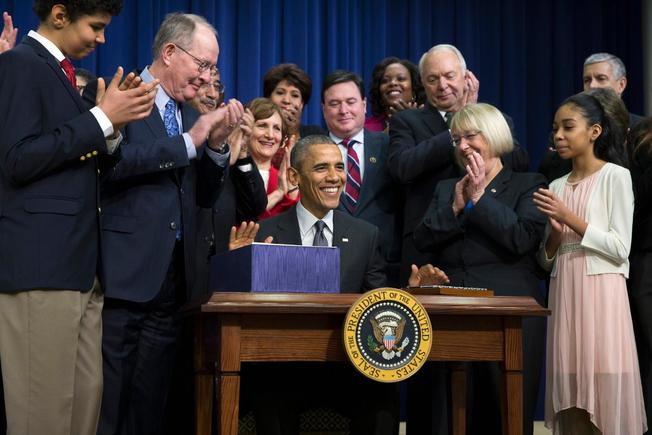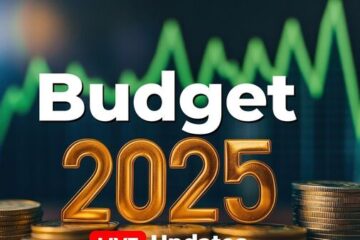
Every teacher of low-income children and English-language learners has had this moment: You’re sitting with a student, working line by line through a text, grappling with what should be fairly simple comprehension questions.
“Did you read it?” you ask. “I read it,” the child replies. “But I didn’t get it.”
Often this is what reading failure looks like in a struggling school. A child can read the words on a page in front of him, but he can’t always make sense of them. The common-sense solution – both for teachers and policymakers – has been to make more time for reading instruction. It makes sense, but it hasn’t worked. That’s because reading comprehension is not a skill that can be practiced and mastered like a basketball free throw. Children’s ability to understand what they read is intimately intertwined with their background knowledge and vocabulary. If a child is not broadly educated, he won’t be fully literate.
John King made precisely this point Thursday in a remarkable speech in Las Vegas. The newly minted secretary of education is pushing for schools to take advantage of the Every Student Succeeds Act to give every child the broadest possible education. The kind “that engages and intrigues kids, allowing them to discover interests in the arts and the sciences and world languages and so much else.” He also touched on another reason why a rich and varied education is critical: It’s how you build a reader.
If there’s ever been a case of “wrong for all the right reasons,” it’s the laser-like focus on reading and math that has been the hallmark of schooling for the last couple of decades and enshrined in education policy under the No Child Left Behind Act. There’s a surface plausibility to the idea that nothing matters more than reading. But we’ve followed this well-intentioned idea off a cliff.
When I was a new teacher at P.S. 277 in the South Bronx, fewer than 20 percent of my fifth-grade students scored at proficient levels in reading. There was no shortage of explanations. Poverty. Low expectations. Lousy teachers. Kids weren’t engaged. They didn’t have the opportunity to partake in “authentic” reading and writing that reflected their lives and interests. The one man whose work explained precisely what I was seeing is E. D. Hirsch, Jr.
In 1987, Hirsch published “Cultural Literacy,” an out-of-nowhere blockbuster that spent most of the year on The New York Times best-seller list, largely on the strength of the book’s list of 5,000 people, events, books and concepts that Hirsch claimed were an integral part of a well-rounded education. It sparked an important debate about what every American should know, but Hirsch’s main point was lost: Language proficiency rests on a common body of knowledge. The words we read, write, speak and hear are the visible tip of a verbal iceberg: Meaning comes from what’s beneath the surface – and inside the recipient’s mind. To understand one another, writers, readers, speakers and listeners need more in common than 26 letters of the alphabet and the words they form. They also need common context. The phrase “Dickensian squalor” means nothing unless you know a little bit about Charles Dickens and his novels, for example. Literate people know things and assume their readers do, too. When they don’t, meaning suffers. They read it. But they don’t get it.
The importance of shared knowledge in our economically and culturally diverse country cannot be overstated. Accordingly, King framed his call for a well-rounded education as a matter of “educational justice.” Too often, he noted, “It’s kids from low-income families and kids of color who start out on the wrong side of those word gaps. Frequently, they are the ones who may miss out on a wide range of experiences, from museum visits to travel. And too often, they are the ones who lack access to a wide range of challenging courses once they get to school.” This is precisely correct.
There was no conspiracy to deny low-income children and kids of color a well-rounded education, but the results would be the same if there had been. Educators interpreted poor academic performance as an inevitable effect of poverty outside of school, and a lack of curricular relevance and student engagement inside. Policymakers interpreted low performance as low expectations, poor teaching and a lack of urgency. And we all agreed that science, history, art and music are all well and good, but first let’s make sure all the kids can read. King’s speech is a critical and long overdue call to re-examine our assumption about education’s thorniest problem: why it’s been so damn hard to raise reading achievement even as we focused more effort – and the full weight of education policy efforts – on it.
Significantly, the secretary did not shy away from discussing the role that testing has played in narrowing the focus of schools to reading, math and not much else. Done well and thoughtfully, testing provides vital information aimed at ensuring equity. “But in some places, an exclusive emphasis on the tested subjects drove a narrowing of what was taught and learned,” he noted. “There is a lot of reason to believe that students are not getting the instruction in science, social studies, the arts and world languages that they need.”
The secretary cited one study that found students spend only about 20 minutes a day on social studies and not much more on science. “I count myself among those who worry that the balance has shifted too much away from subjects outside of math and English, subjects that can be the spark to a child’s interest and excitement, are actually essential to success in reading and are critical to a child’s future.” King also noted – again, correctly – that “decades of research from folks like Daniel Willingham at the University of Virginia illustrate that students with broad knowledge are actually stronger readers.” Most significantly, the new secretary noted that the Every Student Succeeds Act, passed by Congress and signed by the president late last year to replace the unlamented No Child Left Behind law, means “the opportunity to widen how we understand educational excellence is suddenly ripe.”
That’s why King’s speech matters. He looked at the research, the data on curriculum-narrowing and the unintended consequences of test-driven accountability practices.
[Source:- US news]


